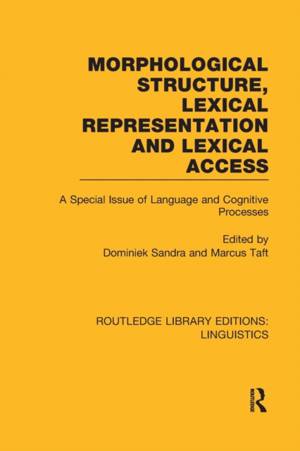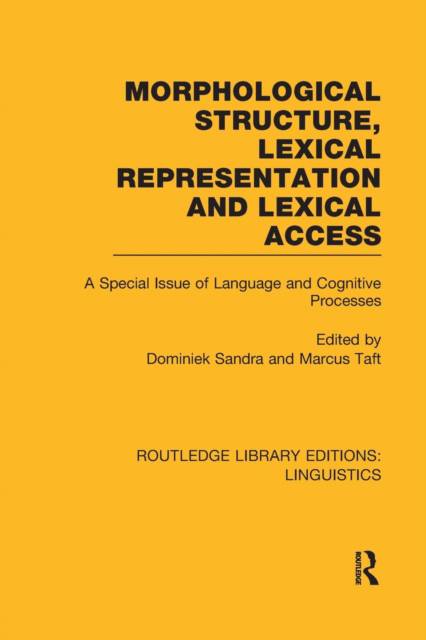
- Retrait gratuit dans votre magasin Club
- 7.000.000 titres dans notre catalogue
- Payer en toute sécurité
- Toujours un magasin près de chez vous
- Retrait gratuit dans votre magasin Club
- 7.000.000 titres dans notre catalogue
- Payer en toute sécurité
- Toujours un magasin près de chez vous
Morphological Structure, Lexical Representation and Lexical Access
A Special Issue of Language and Cognitive Processes
Description
The main concern of this work is whether morphemes play a role in the lexical representation and processing of several types of polymorphemic words and, more particularly, at what precise representational and processing level. The book comprises two theoretical contributions and a number of empirical ones. One theoretical paper discusses several possible motivations for a morphologically organised mental lexicon (like the economy of representation view, and the efficiency of processing view), and lays out the weaknesses that are associated with some of these motivations. The other theoretical paper offers an interactive-activation reinterpretation of the findings that were originally reported within the lexical search framework. The empirical papers together cover a relatively broad array of language types and mainly deal with visual word recognition in normals in the context of lexical morphology (derived and compound words). Evidence is reported on the function of stems and affixes as processing units in prefixed and suffixed derivations. The role of semantic transparency in the lexical representation of compounds is studied, as is the effect of orthographic ambiguity on the parsing of novel compounds. The inflection-derivational distinction is approached in the context of Finnish, a highly agglutinative language with much richer morphology than the languages usually studied in psycholinguistic experiments on polymorphemic words. Two other contributions also approach the study object in the context of relatively uncharted domains: one presents data on Chinese, a language which uses a different script-type (logographic) from the languages that are usually studied (alphabetic script), and another one presents data on language production.
Spécifications
Parties prenantes
- Editeur:
Contenu
- Nombre de pages :
- 256
- Langue:
- Anglais
- Collection :
Caractéristiques
- EAN:
- 9781138994218
- Date de parution :
- 26-11-15
- Format:
- Livre broché
- Format numérique:
- Trade paperback (VS)
- Dimensions :
- 156 mm x 234 mm
- Poids :
- 367 g






